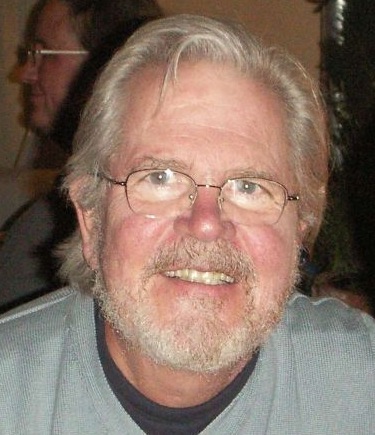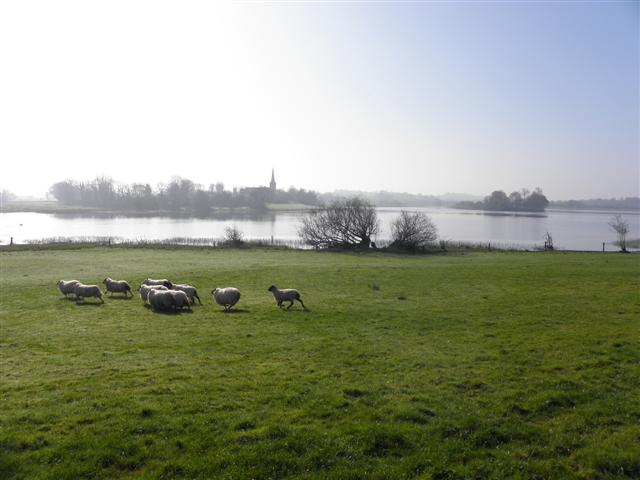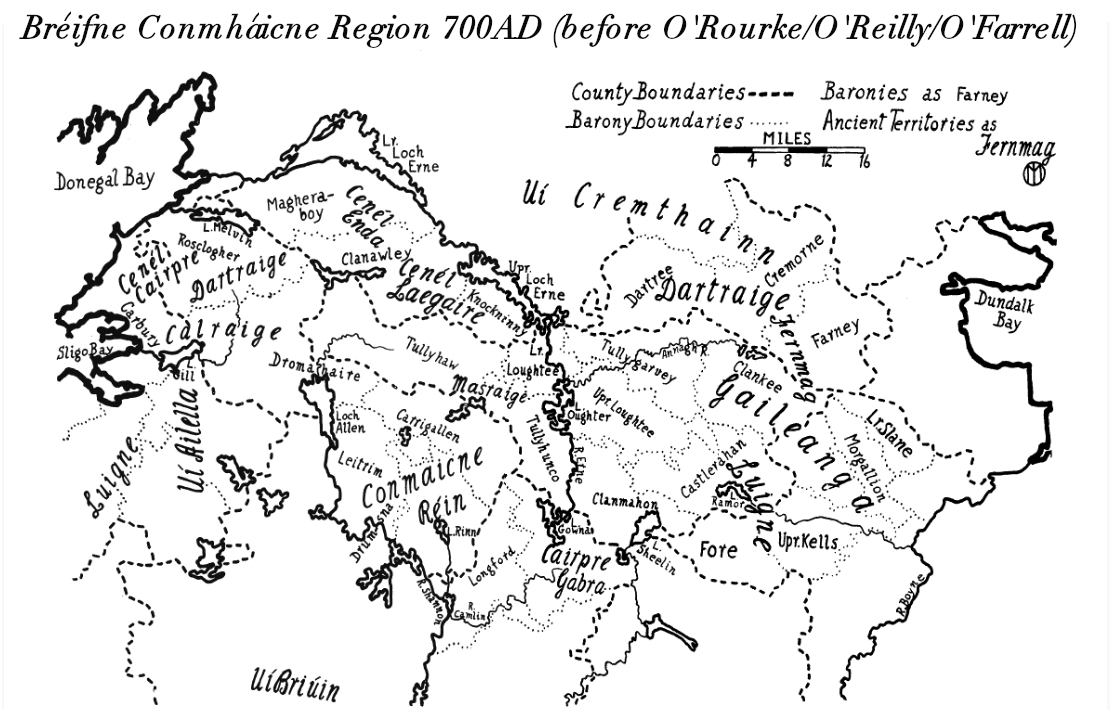|
Sralahan
Sralahan or The Common is a townland in the Civil Parish of Tomregan but Roman Catholic Parish of Templeport, Barony of Tullyhaw, County Cavan, Ireland. Etymology The townland name Sralahan is an anglicisation of the Gaelic placename "Srath Leathan", which means 'Broad River-meadow'. The reason why it is in two parishes and also why it is called 'The Common', is given in the Ordnance Survey papers of 1835 as follows ''"This land is extra-Parochial and it is not certain whether it belongs to Tomregan or Templeport Parishes. It was formerly a track of waste mountain and was claimed by no particular person, but of late years there has several poor people settled upon it and cultivated about 58 acres which produce oats and potatoes. They are however free from any rent, cess or tithe at the present time. There is a lawsuit at present concerning the townland which until settled it is a matter of doubt whether it belongs to the parishes of Templeport or Tomregan." esc. Rem. "This townla ... [...More Info...] [...Related Items...] OR: [Wikipedia] [Google] [Baidu] |
Tomregan
Tomregan ( ga, Tuaim Dreagain, ) is a civil parish in the ancient barony of Tullyhaw. The parish straddles the international border between the Republic of Ireland and Northern Ireland. The largest population centre in the parish is Ballyconnell, County Cavan. The total area of the civil parish is 10,600 statute acres. Most of Tomregan's constituent townlands are situated in County Cavan while the remainder lie in County Fermanagh. In the Catholic Church, the ecclesiastical parish of Tomregan was split in the early 18th century, with the County Fermanagh townlands being assigned to the parish of Knockninny while the County Cavan townlands were united with the parish of Kildallan. The townlands The Fermanagh townlands in Tomregan civil parish are- Aghindisert, Carickaleese, Cloncoohy, Derrintony, Derryart, Garvary, Gortahurk, Gortaree, Gortineddan, Gortmullan, Knockadoois, Knockateggal, Tonymore and Ummera. The Cavan townlands in Tomregan civil parish are- Agharaskilly, ... [...More Info...] [...Related Items...] OR: [Wikipedia] [Google] [Baidu] |
Templeport
Templeport () is a civil parish in the barony of Tullyhaw, County Cavan, Ireland. The chief towns in the parish are Bawnboy and Ballymagauran. The large Roman Catholic parish of Templeport containing 42,172 statute acres was split up in the 18th & 19th centuries into three new parishes, Templeport, Corlough and Glangevlin. Etymology The name of Templeport parish derives from the old townland of Templeport (which is now shortened to Port) which is the anglicisation of the Gaelic 'Teampall An Phoirt' ("The Church of the Port or Bank or Landing-Place"). The church referred to is the old church on St. Mogue's Island in the middle of Port Lake. This church fell into disuse in medieval times and a new church was built on the opposite shore of the lake. It was forfeited to Queen Elizabeth in 1590 and started use as a Protestant church in about 1610. It is very unlikely that the island church ever served as the parish church because there was only one boat available and it would have ... [...More Info...] [...Related Items...] OR: [Wikipedia] [Google] [Baidu] |
Mullanacre Upper
Mullanacre Upper is a townland in the Parish of Tomregan, Barony of Tullyhaw, County Cavan, Ireland. Etymology The townland name is an anglicisation of the Gaelic placename "Mullagh an Acre" which means ‘The Acre of the Summit’. In the 17th century it formed part of Carrowmore, County Cavan townland. Geography It is bounded on the north by Legavreagra townland, on the east by Carrowmore, County Cavan townland, on the south by Mullanacre Lower townland and on the west by Clontycarnaghan, Corneen, Gortnavreeghan, Brackley, Templeport, Mullaghlea, Finaghoo, Cullion (Kinawley), Sralahan and Aghakinnigh townlands. Its chief geographical features are Loughan Macmartin mountain lake, Miles’ Lough mountain lake, the Crooked River (Ireland), forestry plantations and Slieve Rushen mountain, on whose southern slope it lies, reaching an altitude of above sea-level. It forms part of the Slieve Rushen Bog Natural Heritage Area. The townland is traversed by minor lanes. The townland ... [...More Info...] [...Related Items...] OR: [Wikipedia] [Google] [Baidu] |
Moher
Moher is a townland in the Parish of Tomregan, Barony of Tullyhaw, County Cavan, Ireland. Etymology The townland name is an anglicisation of the Gaelic placename "Mothar" which means 'A cluster of trees'. In the 17th century it formed part of Carrowmore townland. Geography It is bounded on the north by Sralahan townland, on the east by Mullanacre Lower townland, on the south by Bofealan townland and on the west by Clontycarnaghan townland. Its chief geographical features are the Crooked River (Ireland) and Slieve Rushen mountain, on whose southern slope it lies, reaching an altitude of 600 feet above sea-level. The townland is traversed by the N87 road (Ireland), the Bawnboy Road and other minor lanes. The townland covers an area of 218 statute acres. History It formed part of the Manor of Calva which was granted to Walter Talbot in 1610 as part of the Plantation of Ulster and descended with the rest of the Ballyconnell estate. George Montgomery the estate owner died in 1841 ... [...More Info...] [...Related Items...] OR: [Wikipedia] [Google] [Baidu] |
Clontycarnaghan
Clontycarnaghan () is a townland in the civil parishes in Ireland, civil parish of Templeport, County Cavan, Republic of Ireland, Ireland. It lies in the Roman Catholic parish of Templeport and barony of Tullyhaw. Geography Clontycarnaghan is bounded on the north by Mullanacre Upper townland in Tomregan parish, on the west by Corneen and Munlough North townlands, on the south by Urhannagh and Bofealan townlands and on the east by Sralahan and Moher townlands in Tomregan parish. Its chief geographical features are Slieve Rushen mountain on whose southern slope it lies, the Crooked River (Ireland), waterfalls, mountain bogs, forestry plantations, spring wells and dug wells. It forms part of the Slieve Rushen Bog Natural Heritage Are Clontycarnaghan is traversed by the national secondary N87 road (Ireland), minor roads and rural lanes. The townland covers 371 statute acres. History In medieval times the McGovern barony of Tullyhaw was divided into economic taxation areas called ... [...More Info...] [...Related Items...] OR: [Wikipedia] [Google] [Baidu] |
Townland
A townland ( ga, baile fearainn; Ulster-Scots: ''toonlann'') is a small geographical division of land, historically and currently used in Ireland and in the Western Isles in Scotland, typically covering . The townland system is of Gaelic origin, pre-dating the Norman invasion, and most have names of Irish origin. However, some townland names and boundaries come from Norman manors, plantation divisions, or later creations of the Ordnance Survey.Connolly, S. J., ''The Oxford Companion to Irish History, page 577. Oxford University Press, 2002. ''Maxwell, Ian, ''How to Trace Your Irish Ancestors'', page 16. howtobooks, 2009. The total number of inhabited townlands in Ireland was 60,679 in 1911. The total number recognised by the Irish Place Names database as of 2014 was 61,098, including uninhabited townlands, mainly small islands. Background In Ireland a townland is generally the smallest administrative division of land, though a few large townlands are further divided into h ... [...More Info...] [...Related Items...] OR: [Wikipedia] [Google] [Baidu] |
Tullyhaw
Tullyhaw ( ga, Teallach Eathach) (which means 'The Territory of Eochaidh', an ancestor of the McGoverns, who lived ) is a Barony in County Cavan in the Republic of Ireland. The area has been in constant occupation since pre-4000 BC. Located in the northwest of the county, it has been referred to as Cavan's panhandle. In 1579, East Breifne, then part of Connacht, was made a shire. The shire was named County Cavan ( ga, An Cabhán) after Cavan, the area's main town. The administration remained in the control of the local Irish dynasty and subject to the Brehon and Canon Law. In 1584, Sir John Perrot formed the shire into a county in Ulster. It was subdivided into seven baronies: *two of which were assigned to Sir John O'Reilly and *three to other members of the family; *two remaining, possessed by the septs of ** McKiernan Clan and **McGovern (a.k.a. ''Magauran'') The last one, Tullyhaw, encompassed the mountains bordering on O'Rourke's country, and was left subject t ... [...More Info...] [...Related Items...] OR: [Wikipedia] [Google] [Baidu] |
County Cavan
County Cavan ( ; gle, Contae an Chabháin) is a Counties of Ireland, county in Republic of Ireland, Ireland. It is in the Provinces of Ireland, province of Ulster and is part of the Border Region. It is named after the town of Cavan and is based on the historic Gaelic Ireland, Gaelic territory of East Breifne, East Breffny (''Bréifne''). Cavan County Council is the Local government in the Republic of Ireland, local authority for the county, which had a population of 76,176 at the 2016 census. Geography Cavan borders six counties: County Leitrim, Leitrim to the west, County Fermanagh, Fermanagh and County Monaghan, Monaghan to the north, County Meath, Meath to the south-east, County Longford, Longford to the south-west and County Westmeath, Westmeath to the south. Cavan shares a border with County Fermanagh in Northern Ireland. Cavan is the 19th largest of the 32 counties in area and the 25th largest by population. The county is part of the Northern and Western Region, a Nom ... [...More Info...] [...Related Items...] OR: [Wikipedia] [Google] [Baidu] |
Republic Of Ireland
Ireland ( ga, Éire ), also known as the Republic of Ireland (), is a country in north-western Europe consisting of 26 of the 32 counties of the island of Ireland. The capital and largest city is Dublin, on the eastern side of the island. Around 2.1 million of the country's population of 5.13 million people resides in the Greater Dublin Area. The sovereign state shares its only land border with Northern Ireland, which is part of the United Kingdom. It is otherwise surrounded by the Atlantic Ocean, with the Celtic Sea to the south, St George's Channel to the south-east, and the Irish Sea to the east. It is a unitary, parliamentary republic. The legislature, the , consists of a lower house, ; an upper house, ; and an elected President () who serves as the largely ceremonial head of state, but with some important powers and duties. The head of government is the (Prime Minister, literally 'Chief', a title not used in English), who is elected by the Dáil and appointed by ... [...More Info...] [...Related Items...] OR: [Wikipedia] [Google] [Baidu] |
Crooked River (Ireland)
The Crooked River rises in Loughan Macmartin at the top of Slieve Rushen Mountain, in the townland of Carrowmore, Parish of Tomregan, Barony of Tullyhaw, County Cavan, Ireland. It then flows in a southerly direction and discharges into the Shannon–Erne Waterway in the townland of Derryginny Derryginny is a townland in the Parish of Tomregan, Barony of Tullyhaw, County Cavan, Ireland. Etymology The townland name is an anglicisation of the Gaelic placename "Doire Goinimhe" which means the 'Oakwood of the Sand', which possibly der .... It has a fish population of brown trout, pike, minnows, stoneloach and perch. References Rivers of County Cavan {{Cavan-geo-stub ... [...More Info...] [...Related Items...] OR: [Wikipedia] [Google] [Baidu] |
Slieve Rushen
Slieve Rushen is a mountain which straddles the border between County Cavan in the Republic of Ireland and County Fermanagh in Northern Ireland. It is also called Slieve Russell or Ligavegra (Also Legavagra, Ligavagra). It has an elevation of 404 metres above sea-level. OS 1/50k Mapsheet: 27A & 26. Grid Ref: H234 226. The mountain is made up of grey limestone with a cap of sandstone and shales and is extensively quarried by local companies. The surface is mostly covered with peat, conifer forests and grazing fields. The mountain contains several caves and swallow-holes including Pollnagollum (Slieve Rushen) and Tory Hole which are a popular destination for potholers, both situate in Legavreagra townland. It forms part of the Slieve Rushen Bog Natural Heritage Are A recent addition to the mountain is the Slieve Rushen Wind Farm for generating electricity. Etymology The name Slieve Rushen derives from the Gaelic ' ''Sliabh Ros-in'' ' which means "''The Mountain of the Little Wo ... [...More Info...] [...Related Items...] OR: [Wikipedia] [Google] [Baidu] |
Plantation Of Ulster
The Plantation of Ulster ( gle, Plandáil Uladh; Ulster-Scots: ''Plantin o Ulstèr'') was the organised colonisation (''plantation'') of Ulstera province of Irelandby people from Great Britain during the reign of King James I. Most of the settlers (or ''planters'') came from southern Scotland and northern England; their culture differed from that of the native Irish. Small privately funded plantations by wealthy landowners began in 1606, while the official plantation began in 1609. Most of the colonised land had been confiscated from the native Gaelic chiefs, several of whom had fled Ireland for mainland Europe in 1607 following the Nine Years' War against English rule. The official plantation comprised an estimated half a million acres (2,000 km2) of arable land in counties Armagh, Cavan, Fermanagh, Tyrone, Donegal, and Londonderry. Land in counties Antrim, Down, and Monaghan was privately colonised with the king's support. Among those involved in planning and ov ... [...More Info...] [...Related Items...] OR: [Wikipedia] [Google] [Baidu] |






